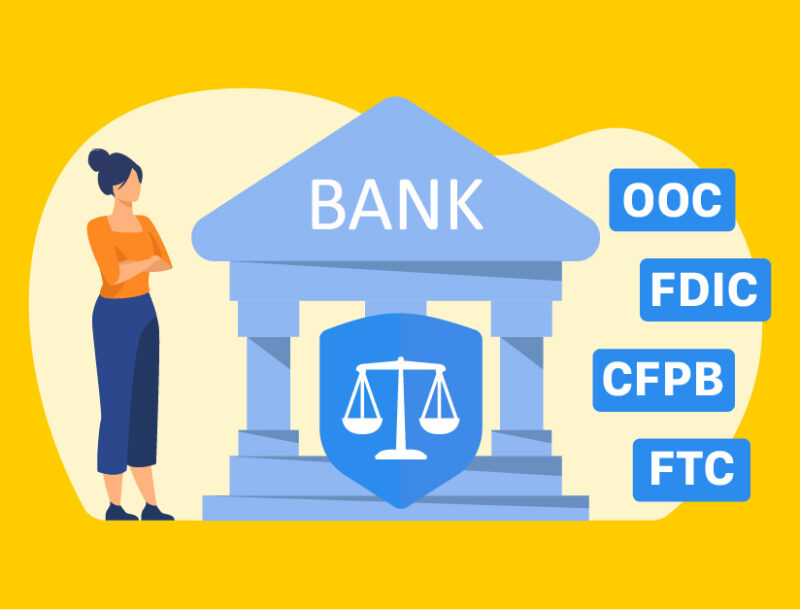Common Marketing Compliance Issues and How to Avoid Them

PerformLine’s latest report outlines the most common marketing compliance issues facing the consumer finance industry today. In a recent webinar, I was joined by my colleagues to take a deeper dive into these findings and discuss best practices for compliance monitoring and brand protection across marketing channels.
Here’s a recap of the discussion.
Compliance Rulebooks and Technology
How PerformLine’s Technology Works
PerformLine’s rulebooks are compilations of terms and phrases that are used to flag potential compliance violations-depending on the context in which they’re used-across marketing channels. These rulebooks span from broad categories and regulations (such as UDAAP) to industry-specific regulations and guidelines.
Once an observation is flagged, users can either:
- Close out the observation because it’s not a true compliance violation in the context that the term is used
- Send out communication to the source of the asset flagged and request that language be changed and remediated
How We Pulled Compliance Data for the Report
For the Top Marketing Compliance Issues Report, we analyzed data from remediated assets only-meaning users acted on the observations and ultimately confirmed that it was a legitimate compliance issue.
The report compiles aggregate data over a 12-month period from a wide variety of industries, including mortgage, buy now pay later, banking, personal loans, student loans, partner banks, fintechs, and payment processors.
Brand Protection Across Third Parties
One of the most notable findings in this report is that the term “payday” was among the top most monitored and remediated terms across industries. From what we’ve seen in the data, just about every organization that touches consumer finance is likely to have these types of compliance issues.
This term is so prevalent across industries. It blew my mind how common this type of infraction was.
In this context, we most often see instances where external entities use brand names to falsely promote certain products or services as “payday” loans, quick cash, or instant money- terms that would lead the consumer to believe that they can receive a payday loan, which are typically predatory and under heavy regulatory scrutiny.
Some of these third parties make their sites look legitimate and will go as far as using a business’s correct name, logo, address, website, phone number, and more to convince consumers that it’s really from the brand. So, the consumer thinks they’re applying for a product from a certain company, but instead, they’re giving their information to a fraudulent third party that has no relation to the brand that they are promoting.
Given the fact that people can be very creative when it comes to this type of marketing, PerformLine’s rulebooks are designed to be as customizable, flexible, and adaptable as your marketing is. If your organization comes across a new variation of a marketing tactic, trend, or language, it can be added to the rulebook within minutes.
What You Don’t Know Can Hurt You
It’s the things that organizations don’t know that could cause the most harm to the business.
There’s been an uptick in these types of compliance issues over the last quarter that inaccurately use the term “payday.” As the market is in limbo right now and business is slowing down, it’s not unlikely for individuals (like affiliate marketers, for example) to be a little riskier in their lead generation tactics.
Although not everybody is a “bad actor,” now is a good time to make sure you’re covering your bases with brand monitoring to avoid falling into any traps of deceptive advertising in the hands of a third party. Take a look at what you’re monitoring for, who you’re monitoring, and how you’re monitoring for compliance.
Subjective Language Requires Substantiation for Compliance
Another commonly monitored and remediated category across industries is subjective language, which includes terms like “the best,” “lowest,” “affordable,” and “bad.”
The compliance challenge is that subjective terms are heavily influenced by a consumer’s opinions or feelings. For example, what one customer interprets as “affordable” may not be considered affordable for the next, which is why substantiation is so important to avoid potential compliance violations, especially for deceptive practices under UDAAP.
Another issue with this type of language is that we’re living in a time where there are so many individuals and companies making subjective claims, and consumer trust is at an all-time low. But, there are some vulnerable consumers-such as younger consumers who don’t have as much experience with financial products and services-that might not know better than to doubt these claims or take them with a grain of salt.
These consumers then may apply for a financial product just because they claim to be “the best” or the “most affordable,” but in reality, the product may not actually be the best fit for them. Now, these consumers are harmed and left with a product that they can’t afford because of deceptive advertisements.
If you’re going to make a claim that’s subjective, you must ensure that you’re providing disclosures to clarify the statement that’s being made and to avoid harming consumers.
PerformLine’s rulebook for subjective language is designed to monitor assets for these types of claims to help organizations ensure that they’re substantiated and to help increase their vigilance in monitoring for any potential deceptive marketing practices.
Compliance Concerns Around Instant or Fast Approvals
Another common compliance issue across industries is around phrases related to “instant” or “fast” approvals.
In today’s digital age, people want things as quickly as possible, and financial products are no exception. Consumers want their products instantly-but what does that actually mean? Similar to subjective language, terms like “instant” or “fast” are up to the interpretation of the consumer.
Some consumers will make their decision based solely on who can get them their desired result the fastest. So, when it comes to a consumer’s financial well-being, you must be responsible with these terms and the type of language you’re putting out there.
Don’t Promise Approvals-Especially Not Instant Ones
Using terms like “instant” or “fast” in the same line as “approval” can get messy quickly if proper disclosures aren’t in place.
First, using phrases such as “get an instant loan” usually doesn’t mean that the consumer will be approved and receive their funds that same day-but, that’s what the consumer may think once they read that ad, which is why you must provide disclosures when using time frames that are subject to interpretation to set realistic expectations and avoid misleading the consumer.
Second, promising approval for all consumers is risky because very few companies are able to guarantee approvals for every consumer. But, some consumers may take the phrase “instant approval” at face value, apply for a product and run the hard credit check, and end up not getting approved after all.
Many organizations use phrases like “instant decision” instead, which implies that the consumer will get a decision quickly on whether or not they’re approved for a product, but it helps avoid the expectation that they’ll be automatically approved or that they’ll receive their funds the same day.
Avoid Black-Box Models and ECOA Compliance Issues
Regulators, especially the Consumer Financial Protection Bureau (CFPB), have been increasing their focus on algorithms and black-box models for lending decisions and how it impacts consumers.
When putting marketing materials together, be weary of how they’ll be ingested by the consumer and take the appropriate steps to provide disclosures and additional context.
You’ll need to be able to explain to consumers-and potentially regulators-how the credit decision was made and ensure that it doesn’t fall into an Equal Credit Opportunity Act (ECOA) compliance violation.
Compliance Technology for Consumer Protection
While evaluating and monitoring marketing assets for potential compliance issues, it’s very important to consider the consumer protection piece. Consumer protection should be a top priority for all consumer finance organizations.
Take a proactive approach to protecting your brand and consumers with PerformLine’s omni-channel compliance technology.
I look at us more than just a technology company. I look at us as part of that continuum of consumer protection.
Learn more about how to avoid top marketing compliance issues and protect consumers by scheduling a demo with our team today.
To get full insights on common marketing compliance issues, watch the webinar on-demand here.


